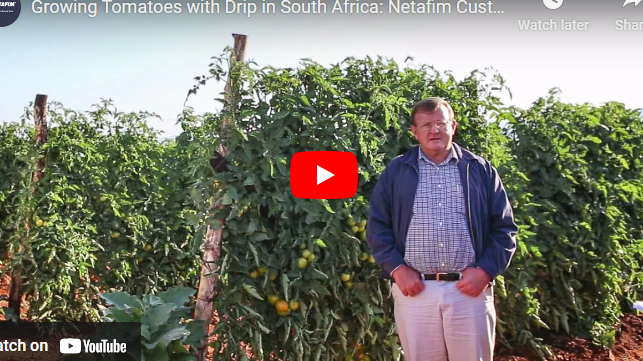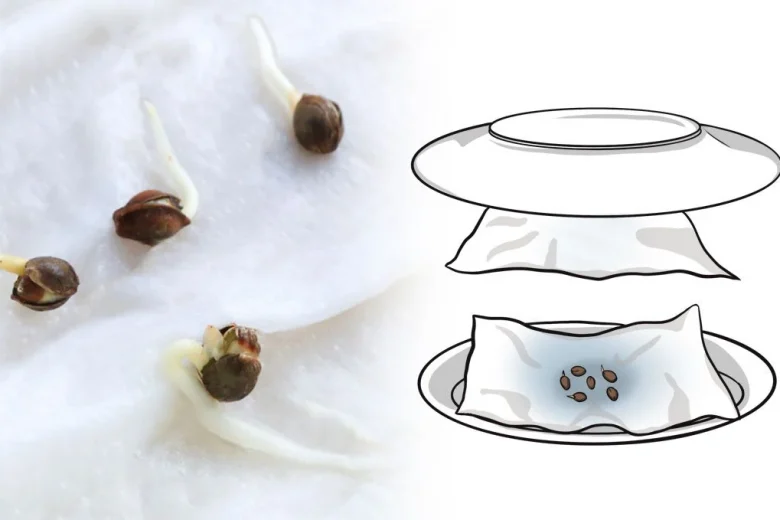The drip irrigation system has proven to be a valuable tool for farmers in South Africa, given the country’s arid and semi-arid climate.
As water scarcity continues to be a major concern in South Africa, drip irrigation has become an important part of the country’s agricultural landscape.
The technology has helped farmers conserve water and increase crop yields, leading to improved food security and economic growth.
In this article, we will explore the different aspects of drip irrigation systems in South Africa, including types, benefits, costs, and challenges, as well as how the technology has impacted the country’s agriculture sector.
Drip Irrigation System In South Africa
Drip irrigation system is a type of irrigation that allows water to drip slowly to the roots of plants, thereby reducing water loss due to evaporation and runoff. The system has gained popularity in South Africa, especially in areas with limited access to water and unreliable rainfall.
Read Also: Drip Irrigation System In Israel
With water scarcity being a major challenge in the country, drip irrigation helps farmers conserve water by reducing wastage and optimizing water use. This has led to increased crop yields and improved food security in the country.
They require minimal labor, and farmers can adjust the water flow and frequency based on the needs of their crops. The technology is also adaptable to different soil types and topography, making it suitable for use in various regions of South Africa.
Read Also: Drip Irrigation System in Greenhouse
Drip irrigation system has become an important part of South Africa’s agriculture landscape, offering farmers an efficient and sustainable method of irrigation that contributes to improved crop yields, food security, and economic growth.
Types of Drip Irrigation in South Africa
There are several types of drip irrigation systems that are commonly used in South Africa. These include:
#1. Surface Drip Irrigation
Surface drip irrigation is a popular method of irrigating crops in South Africa. The system involves laying out drip tubing on the soil surface, where water drips directly onto the soil. This type of irrigation is particularly useful for row crops and orchards.
Read Also: Drip Irrigation System In Africa
The installation process of a surface drip irrigation system typically involves preparing the soil surface, laying the tubing in straight lines along the rows of plants, and connecting the tubing to a water source.
The tubing should be placed close enough to the plants to ensure that water reaches the root zone, but not so close that it causes waterlogging.
In a surface drip irrigation system, water flows through the tubing under low pressure and drips out of emitters spaced at regular intervals along the tubing.
Read Also: List of Irrigation Schemes In Ghana
The emitters can be adjusted to control the rate of water flow and ensure that water is distributed evenly across the field.
Surface drip irrigation is a highly efficient method of irrigation, as it delivers water directly to the root zone of the plants, minimizing water loss due to evaporation or runoff.
It also reduces the growth of weeds, as water is delivered only to the plants being cultivated.
#2. Subsurface Drip Irrigation
Subsurface drip irrigation (SDI) is a highly efficient system that can save water and nutrients while providing uniform irrigation to crops.
The installation process involves burying drip tubing 15-30 cm deep in the soil, directly below the root zone of the plants.
Read Also: List of Irrigation Schemes in Africa
The tubing is laid out in parallel lines, and each line is connected to a water source and a filter system.
Water is delivered to the plants through small emitters in the tubing, which can be spaced at varying distances to provide optimal water distribution.
This system reduces water loss through evaporation and runoff, and also reduces weed growth and disease spread as water is only delivered directly to the roots of the plants.
#3. Inline Drip Irrigation
Inline drip irrigation, also known as integrated drip irrigation, involves the use of drip emitters directly embedded into the drip tubing.
The tubing is typically buried below the soil surface to deliver water directly to the roots of the plants.
Read Also: Drip Irrigation System Ghana [Installation Guide ]
This type of system is ideal for crops that require a consistent water supply and where the tubing will not be disturbed during cultivation or harvesting.
Installation of inline drip irrigation involves laying the tubing and emitters in the field, connecting the tubing to a water source, and regulating the water flow through the use of a pressure regulator and filter.
The emitters are spaced at regular intervals along the tubing, based on the water requirements of the crop and the soil type.
Maintenance of inline drip irrigation involves periodic cleaning of the filter and checking for any leaks or clogs in the emitters.
#4. Micro-Sprinkler Irrigation
Micro-sprinkler irrigation is a type of drip irrigation system that works by distributing water over a wider area using small sprinklers.
This method is ideal for crops that require more frequent watering, such as leafy vegetables.
The micro-sprinklers are installed above ground and can be attached to stakes or supported by a trellis system. The sprinklers are placed strategically to provide optimal water coverage for the crops.
The installation process of a micro-sprinkler irrigation system involves preparing the soil by removing any rocks or debris that could interfere with the water distribution.
The system is then set up by placing the sprinklers in the designated locations, connecting them to the water source and the main tubing, and adjusting the water pressure to ensure proper water distribution.
The system also requires regular maintenance, such as cleaning the sprinkler heads and replacing any damaged components.
One advantage of micro-sprinkler irrigation is that it can be customized to suit the needs of different crops, ensuring that each plant receives the right amount of water.
This system can be used on irregularly shaped fields and can save water by reducing evaporation and runoff.
However, it may require a higher initial investment compared to other drip irrigation systems and can be less efficient in areas with high winds.
Best Practices of using Drip Irrigation System in South Africa
- Plan your system carefully: Before installation, determine the flow rate, pressure, and water requirements of your crops to ensure that the system is designed to meet their specific needs.
- Keep the water clean: Regularly check and clean your filters to prevent clogging, which can reduce water flow and cause uneven watering.
- Monitor water usage: Use a water meter to keep track of water usage and ensure that you are not over or under watering your crops.
- Use proper irrigation scheduling: Implement an irrigation schedule that is based on weather patterns, crop water requirements, and soil moisture levels.
- Check for leaks: Inspect your system regularly for leaks and repair any damage immediately to prevent water waste and plant damage.
Measures to Maintain Drip Irrigation System in South Africa
- Regular cleaning of the filters: Drip irrigation systems are susceptible to blockages caused by dirt, sand, and other debris. To avoid clogging, clean the filters regularly.
- Check the system for leaks: Inspect the system regularly for leaks. Leaks waste water and can cause damage to the plants.
- Monitor water pressure: Maintain the recommended water pressure for your drip irrigation system. High pressure can damage the system and cause leaks while low pressure can result in uneven watering.
- Check the emitters: Check the emitters regularly for clogging and ensure they are functioning properly.
- Replace worn-out components: Replace any worn-out or damaged components such as tubes, emitters, filters, and connectors.
Tips to Select the Right Irrigation System in South Africa
- Consider the type of crop you are growing and its water requirements.
- Evaluate the soil type and topography of your field.
- Determine your budget and available resources for installation and maintenance.
- Consider the climate and weather patterns of your region.
Advantages of Drip Irrigation System in South Africa
- Water conservation: Drip irrigation systems use water efficiently and reduce water waste.
- Improved crop yield: Drip irrigation systems provide a consistent and precise water supply to crops, resulting in improved yield and quality.
- Reduced weed growth: Drip irrigation systems deliver water directly to the roots of plants, reducing weed growth.
- Reduced labor costs: Drip irrigation systems require less labor for installation and maintenance compared to other irrigation systems.
- Improved soil health: Drip irrigation systems promote soil health by reducing soil erosion and compaction.
Disadvantages of Drip Irrigation System in South Africa
- Initial investment: Drip irrigation systems can be expensive to install, requiring a significant initial investment.
- Clogging: Drip irrigation systems are prone to clogging due to sediment and other debris in the water.
- Maintenance: Regular maintenance is required to ensure proper functioning of the system, which can be time-consuming and costly.
- Dependence on electricity: Some drip irrigation systems require electricity to operate, which can be a disadvantage in areas with limited access to electricity.
Costs of Drip Irrigation System in South Africa
The cost of a drip irrigation system in South Africa can vary based on the size of the farm, the type of crops being grown, and the specific needs of the farmer.
However, on average, a drip irrigation system can cost between R10,000 to R15,000 per hectare.
This may seem expensive, but it is important to note that drip irrigation systems can reduce water usage and fertilizer costs, leading to significant long-term savings.
Importance of Drip Irrigation Systems in South Africa
Drip irrigation systems are vital for the agricultural sector in South Africa, especially in areas with limited water resources.
Drip irrigation systems allow for precise and efficient water delivery, ensuring that crops receive the necessary amount of water without any waste.
Drip irrigation systems can reduce soil erosion, minimize weed growth, and increase crop yields.
This is particularly important for small-scale farmers who rely on their crops for income and food security.
Hectare Drip Irrigation Price in South Africa
The cost of a drip irrigation system for 1 hectare of land in South Africa depends on several factors, including the type of system, quality of materials, and installation costs.
Generally, a basic drip irrigation system can cost anywhere from R30,000 to R60,000.
However, more advanced systems that include automation and monitoring can cost upwards of R100,000 or more.
Drip Irrigation Kit for 1 Hectare in South Africa
A drip irrigation kit for 1 hectare of land typically includes a water source, a filter, a pump, a pressure regulator, and a network of drip tubing, emitters, and fittings.
The cost of a drip irrigation kit for 1 hectare can vary depending on the brand and quality of materials, but a basic kit can cost between R5,000 to R10,000.
Drip Irrigation System PDF in South Africa
There are many resources available online in South Africa that provide detailed information on drip irrigation systems.
PDFs are commonly available and can provide detailed information on how drip irrigation systems work, how to install and maintain them, and how to optimize their performance.
These resources can be found on agricultural and irrigation equipment supplier websites, government agency websites, and academic research institutions.
Drip Irrigation System Price in South Africa
The cost of a drip irrigation system in South Africa can vary widely depending on the size of the area being irrigated, the type of system, and the quality of materials.
A basic drip irrigation system for a small garden can cost as little as R1,000, while a large commercial system for farming operations can cost tens of thousands of rands.
Drip Irrigation Kits for Small Farms in South Africa
Drip irrigation kits for small farms in South Africa can vary in price and quality. These kits typically include a water source, a filter, a pump, tubing, emitters, and fittings.
The cost of a drip irrigation kit for a small farm can range from a few thousand rands for a basic kit to tens of thousands of rands for a more advanced system.
T-Tape Drip Irrigation in South Africa
T-Tape drip irrigation is a type of inline drip tubing that is widely used in South Africa.
The T-Tape design allows for uniform water distribution and reduced clogging of emitters, which can lead to more efficient water use.
T-Tape drip irrigation is commonly used for row crops, such as vegetables and fruit trees.
Used Drip Irrigation System for Sale in South Africa
Used drip irrigation systems can often be found for sale in South Africa, either through private sellers or through agricultural equipment suppliers.
The cost of a used system can vary depending on its age, condition, and type.
It is important to thoroughly inspect a used drip irrigation system before purchasing to ensure that it is in good working condition.
Drip Irrigation Pipes in South Africa
Drip irrigation pipes are an essential component of a drip irrigation system, as they transport water from the source to the plants.
Drip irrigation pipes in South Africa are typically made from polyethylene, which is durable and resistant to weather and UV damage.
The size and length of the pipes utilized for irrigation will be determined by the size of the irrigated area and the specific irrigation system employed.
Conclusion
Drip irrigation system has revolutionized the agricultural sector in South Africa by providing farmers with an efficient and sustainable method of irrigation. With its numerous benefits such as water conservation and increased crop yields, the technology has become a crucial tool for farmers in the country. Despite the challenges faced in implementing the technology, the future looks bright for drip irrigation systems in South Africa as the country continues to strive towards sustainable agriculture.





